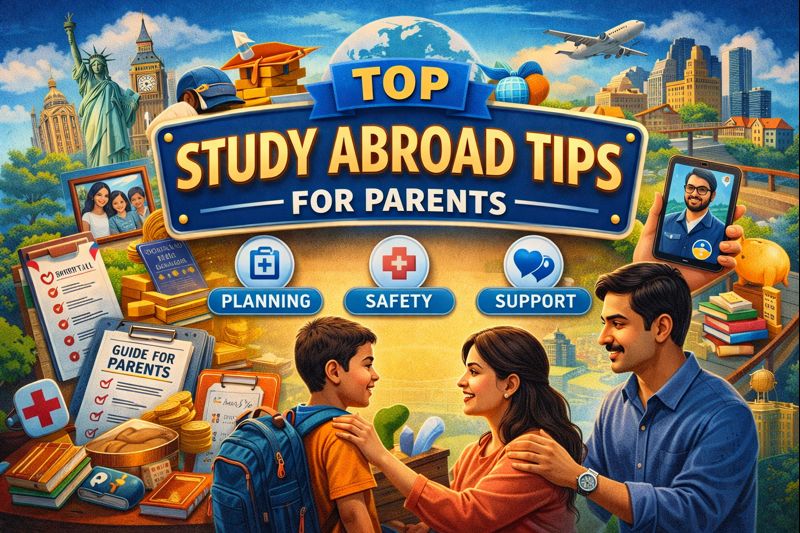The Graduate Management Admission Test (GMAT) is a standardized test used to determine your eligibility for graduate-level business and management programs. The GMAT score is used for 90% of MBA admissions worldwide. The GMAT has earned its reputation due to its comprehensive testing approach, covering a wide range of topics to evaluate analytical, quantitative, and critical thinking skills.
Note: The GMAT test you’re most likely interested in is the GMAT Focus Edition.
What is the GMAT Focus Edition exam?
The GMAT Focus Edition is the latest version of the GMAT exam, launched by the Graduate Management Admission Council (GMAC) in November 2023. This new edition is an evolved version of the previous GMAT Exam (10th Edition) and has several key changes:
- The GMAT Focus Edition is shorter in duration compared to the old GMAT test. This streamlined version is designed to provide a focused evaluation of your analytical and quantitative abilities.
- The new format consists of just three sections with a total of 64 questions. Unlike the previous version, it does not include a writing section, making it more concise.
- There is only one break during the test, making the overall test-taking experience more efficient.
The name of the test will revert to “GMAT Exam” on July 1, 2024. Despite the name change, the structure of the exam will remain the same. This change in name aligns with GMAC’s efforts to streamline and modernize the test.
For students who took the GMAT exam before November 2023, their results will still be valid for five years from the date of the test, despite the changes in the format.
Now, let’s understand the syllabus of the GMAT Focus Edition test.
GMAT exam’s syllabus in 2024 (section-wise)
The following table outlines the three sections in the GMAT Focus Edition Exam, along with the types of questions, the number of questions, and the duration allocated to each section.
| Sections | Duration | Number of Questions | Type of Questions |
| Verbal Reasoning | 45 mins | 23 | Critical Reasoning, Reading, Comprehension |
| Quantitative Reasoning | 45 mins | 21 | Algebra, Arithmetic |
| Data Insights | 45 mins | 20 | Data Sufficiency, Table Analysis, Graphic Analysis, Two-part Analysis |
| Total | 135 mins | 64 |
You can select the order of the sections as per your preference. Next, let’s understand each section in detail.
Verbal Reasoning
The GMAT Verbal Reasoning section tests your comprehension of written passages, your ability to assess arguments, and your capacity for logical inference.
The GMAT Focus Edition Verbal Reasoning section consists of 23 multiple-choice questions to be answered in 45 minutes. In this section, students are tested using two different question types.
Critical reasoning
You will be presented with short passages, usually of no more than 100 words each. There will be 3 to 4 such passages, and each will be accompanied by 3 to 4 questions. These questions test your capacity to formulate, evaluate, and critically analyze arguments in addition to creating and evaluating action plans.
Here are all the skills this section aims to test:
- Recognizing an argument’s logical flow and the connections between its different components.
- Building strong arguments, figuring out what can be logically deduced or concluded and what facts are required for an argument to be valid. This process is known as construction.
- Challenging an argument’s viability, figuring out how to make it stronger or weaker, and spotting errors in the logic.
- Developing and evaluating arguments concerning a course of action, including flagging out flaws in the plan.
Note: On the standard GMAT, Sentence Correction made up around one-third of the Verbal section, but it has been completely removed from the Verbal Reasoning section in the GMAT Focus Edition.
Reading comprehension
This section assesses your ability to interpret text, comprehend the development of quantitative ideas, draw conclusions, and understand the logical connections between important points.
Here are all the skills this section aims to test:
- Determining a passage’s primary idea and any relevant details or evidence.
- Drawing reasonable conclusions from the passage’s information.
- Applying the passage’s insights in fresh contexts or circumstances.
- Understanding the passage’s logical framework and structure.
- Examining the language, writing style, and overall tone of the author.
Quantitative Reasoning
The GMAT’s Quantitative Reasoning section evaluates your grasp of basic algebraic and arithmetic principles, as well as your aptitude for using this knowledge to solve problems.
The GMAT quant syllabus covers a wide range of topics across two broad areas:
Arithmetic
The Arithmetic section includes topics such as number properties, fractions, decimals, percentages, powers and roots, averages, probability, set theory, mixtures and alligations, ratios and proportions, descriptive statistics, pipes, cisterns, work time, speed, time, and distance.
Algebra
The Algebra section includes topics such as monomials, polynomials, functions, exponents, quadratic equations, inequalities, basic statistics, algebraic expressions and equations, permutations and combinations, and progressions.
Notes:
- Conceptual understanding matters more than formula memorization in the GMAT exam. While remembering certain formulas may be necessary, the real goal is to know when and why to use them.
- The Quantitative section only contains problem-solving questions. Data Sufficiency questions, which were a part of the old GMAT test format, have been removed and shifted to the new Data Insights section.
- The questions on geometry have also been removed.
Data Insights Section
The Data Insights section is the latest addition to the GMAT Exam (the Focus Edition). It is designed to test students’ ability to analyze and interpret various forms of data. Also, students are tested on their ability to apply their skills of data interpretation to real-world business scenarios mimicking the real world.
The Data Insights section includes five types of questions.
- Data Sufficiency: These questions consist of a problem statement and two statements of data. The task is to determine whether the provided information is sufficient to solve the problem.
- Multi-source Reasoning: These questions present the students with two or three tabs containing text, tables, and/or images. Students are expected to solve three different problems based on this information.
- Table Analysis: The data in these questions is displayed in a table format. Students need to evaluate whether a set of statements are true or false, based on the tabulated data.
- Graphics Interpretation: In these questions, a visual aid like a chart, graph, or diagram is displayed. Students need to respond to questions connected with it.
- Two-part Analysis: These questions involve selecting two related answers from a single set of answer choices, much like traditional multiple-choice questions.
Now that you are familiar with the exam pattern and syllabus of the GMAT Focus Edition exam, let’s understand how it is scored.
The GMAT exam: How is it scored?
Your GMAT score is the sum of your scores from the verbal, quantitative, and data insights sections. Each of these sections is scored on a scale of 60 to 90 points. When combined, they give you a composite score ranging from 205 to 805 points.
Here’s a breakdown for your better understanding:
- Total Score: Ranges from 205 to 805, with all total scores ending in a 5. Scores are given in intervals of 10 points. The standard error of measurement is between 30-40 points.
- Quantitative Reasoning Score: Ranges from 60 to 90, with scores given in 1-point intervals. The standard error of measurement is about 3 points.
- Verbal Reasoning Score: Ranges from 60 to 90, with scores given in 1-point intervals. The standard error of measurement is around 3 points.
- Data Insights Score: Ranges from 60 to 90, with scores given in 1-point intervals. The standard error of measurement is roughly 3 points.
Remember, the GMAT is an adaptive test. This means the difficulty of the questions adjusts based on your performance. So, your score depends not only on how many questions you get right but also on the difficulty of those questions.
After finishing the exam, your unofficial scores for Quantitative Reasoning, Verbal Reasoning, Data Insights, and your Total Score will be shown on the screen immediately. However, you can’t record, save, screenshot, or print this unofficial score. You will get an email notification when your Official Score Report is ready in your mba.com account.
Note: In the GMAT Focus Edition, exam scores are presented in percentile format. Let’s understand this next.
Understanding percentile format for GMAT Focus Edition exam scores
GMAT scores also come with a percentile ranking. This ranking shows you the percentage of test-takers you outperformed. For example, if you are in the 88th percentile, you performed as well as or better than 88% of the test-takers. Higher percentile scores generally mean you faced tougher questions during the test.
Note that a score of about 645 on the GMAT Focus Edition is equivalent to a score of about 700 in the GMAT Exam 10th Edition. Universities are aware of the change in scoring and understand that both of these scores represent the same thing, which is about the 89th percentile. So, even if your GMAT Focus Edition score seems low, it might actually reflect a strong performance. When you research GMAT cut-off scores for universities, keep this in mind.
Note: GMAT scores are just one of many factors to consider when you shortlist universities you wish to apply to. Other important aspects include the return on your education investment, the alumni network, and career prospects.
However, finding this information can be challenging. That’s where SelectRight comes in. SelectRight makes it very easy to gather all the necessary details. You just need to create a profile, and the AI algorithm will match your academic, personal, and career details with over 40,000 programs across 4,000+ universities worldwide.
SelectRight will give you a shortlist of the best possible universities for you. Within this shortlist, you can make more detailed comparisons, talk to alumni, connect with university faculty, and speak to peers who are going to the same universities. This way, you can make the best possible decision for your future.
Here’s how it works:
- Create your SelectRight profile
- Share your preferences for your dream university and program
- Wait as SelectRight uses AI to match you with top programs tailored to your needs
- Compare your options side by side
- Consult with a SelectRight advisor for all the information you need to make an informed decision

40,000+ programs across 4,000+ universities. Let SelectRight guide you to the best fit. Learn more.
GMAT Focus Edition exam score validity
Your GMAT Focus Edition score remains valid for five years. This gives you the flexibility to send your scores to schools whenever you feel ready.
How should I prepare for the GMAT Focus Edition?
To ace the GMAT Focus Edition, you need to prepare for each section individually. The exam structure has changed slightly, but the essential components remain similar. Here’s a detailed guide to help you get ready:
Understand the Changes
- Data Insights: This section has replaced the Integrated Reasoning section and now constitutes one-third of your total score.
- Verbal Section: Sentence Correction questions have been removed.
- Quantitative Section: Geometry questions have been eliminated.
- Analytical Writing Assessment: The essay section has been removed.
Note: Despite these changes, improving your core abilities (such as reading comprehension, critical thinking, quantitative reasoning, and data analysis) remains crucial to acing the GMAT. You will still need to perform exceptionally well in problem-solving, data sufficiency, critical reasoning, and reading comprehension. That’s because the new Data Insights section includes question types from the previous Integrated Reasoning section.
- Review the GMAT Official Starter Kit for detailed study plans and sample questions.
- Use resources like the GMAT Official Guide 2024-2025 & Online Question Bank.
- Use official resources like the six-week study planner to structure your preparation efficiently.
- Remember that you will be able to use the Question Review & Edit Tool during the test. This tool will let you bookmark questions which you can then revisit later. So, when you practice, develop a knack for answering questions speedily without lingering on the more difficult questions.
By following these steps, you can effectively prepare for the GMAT Focus Edition and aim for a high score. For more detailed resources and practice materials, visit the official GMAT website.
FAQs
1. Are top business schools accepting GMAT Focus Edition scores?
Yes, most prestigious business schools are accepting GMAT Focus Edition scores, and GMAT Exam (10th Edition) scores for admission. Remember, it’s always advisable to check with your target business schools regarding their specific requirements and preferences for the GMAT or GMAT Focus Edition scores.
2. Is the GMAT Focus Edition more difficult than the traditional GMAT?
No, not necessarily. Both the exams have differences and similarities. The new Focus Edition has introduced a Data Insights section, however, has removed the Sentence Correction and Geometry questions, which may be advantageous to students who struggled with them.
3. What is the lifetime limit for taking the GMAT Focus Edition?
The GMAT Focus Edition may be taken 5 times in one year. The combined lifetime limit for taking the GMAT Focus Edition is 8 times.
4. How should I prepare for the Data Insights section?
To prepare for this section, you should focus primarily on data interpretation, analytical reasoning, quantitative reasoning, and critical thinking. Practice drawing logical conclusions from various sources of data.















